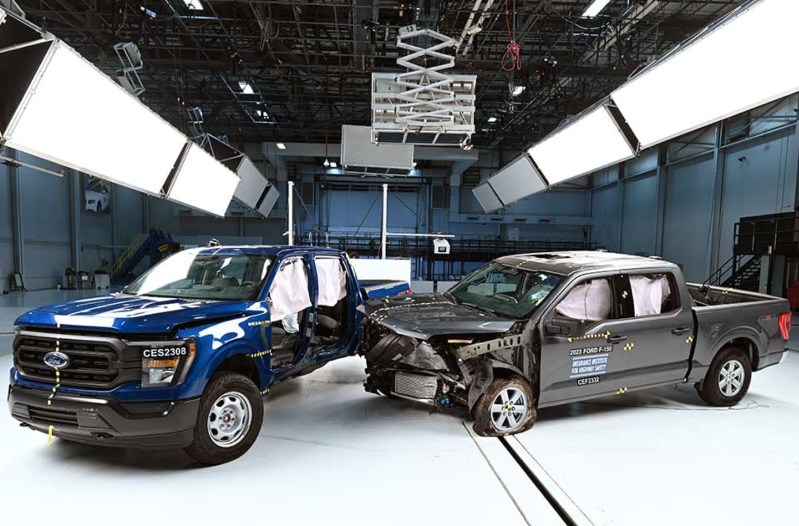
The Insurance Institute for Highway Safety (IIHS) recently reported distressing news about large pickup trucks. The Ford F-150, Chevy Silverado 1500, RAM 1500, and Toyota Tundra crew cab pickups had good results overall in crash tests, but the trucks did not do as well on a test that focuses on backseat passenger protection.
How did the pickup trucks fare?
When the IIHS crash tested 2023 crew cab versions of the Ford F-150, Chevrolet Silverado, Ram 1500, and Toyota Tundra, the trucks earned acceptable to good ratings in side crash tests but didn’t do well on a moderate overlap front crash test. The latter test assesses injury risk to adults and children in the back seat.
The institute’s research showed the risk of fatal injury with newer vehicles was greater for passengers wearing seat belts in the back seats than for people belted and seated in the front seats. As a result of that finding, the IIHS developed the new moderate overlap test in 2022.
The IIHS stated that the difference was due not to downgraded backseat safety but to safety improvements for front seat passengers. Enhanced airbag technology and advanced seat belts found more commonly in front seats than the back lowered the risk for the driver and front seat passengers. The upgraded seatbelts and airbags are seldom available for backseat passengers.
In the IIHS testing, backseat passenger safety was rated based on the risk of injury to a test dummy placed upright behind the driver. The test dummy in the driver’s seat was the size of an average adult man, and the dummy in the second row was the size of a 12-year-old child or a small woman.
The crash test assessed the risk of injury to the dummy’s head, neck, chest, or thigh. During a crash, the dummy should not “submarine” or slide beneath the safety belt. For greatest protection, the shoulder belt shouldn’t move out of position, and the backseat dummy’s head shouldn’t get within a dangerous distance from the front seat’s back.
In the updated moderate overlap front crash test, the dummy in the front seat was well protected. All four crew cab trucks had issues with backseat passengers submarining. Also, the Ford F-150, Ram 1500, and Chevy Silverado 1500 had seatbelt forces that were too high. The Toyota Tundra did not put excessive pressure on the belts.
Measurements from the rear passenger dummy in the Ford F-150 and the Ram 1500 showed the most likely chance of chest, neck, and head injuries. The Silverado 1500’s test results were also excessive but not as high as the Ford or Ram. The Tundra’s risk of head or neck injury was minimally higher, but the risk of chest injury due to poor belt position was excessive. As a result of the testing, the Ford F-150, Chevrolet Silverado 1500, and Ram 1500 were rated Poor, and the Toyota Tundra was rated Moderate on the updated Moderate overlap front test for large pickup trucks.
In a related side crash test, the Ford F-150, RAM 1500, and Toyota Tundra received a Good overall rating for drive and rear passenger protection, but the Silverado 1500 was rated Acceptable, a lower rating due to an elevated risk of rear passenger chest injury.
The IIHS also stated that because of the risks from front seat airbag inflation, children are still safer in the back seat than in the front seat.



